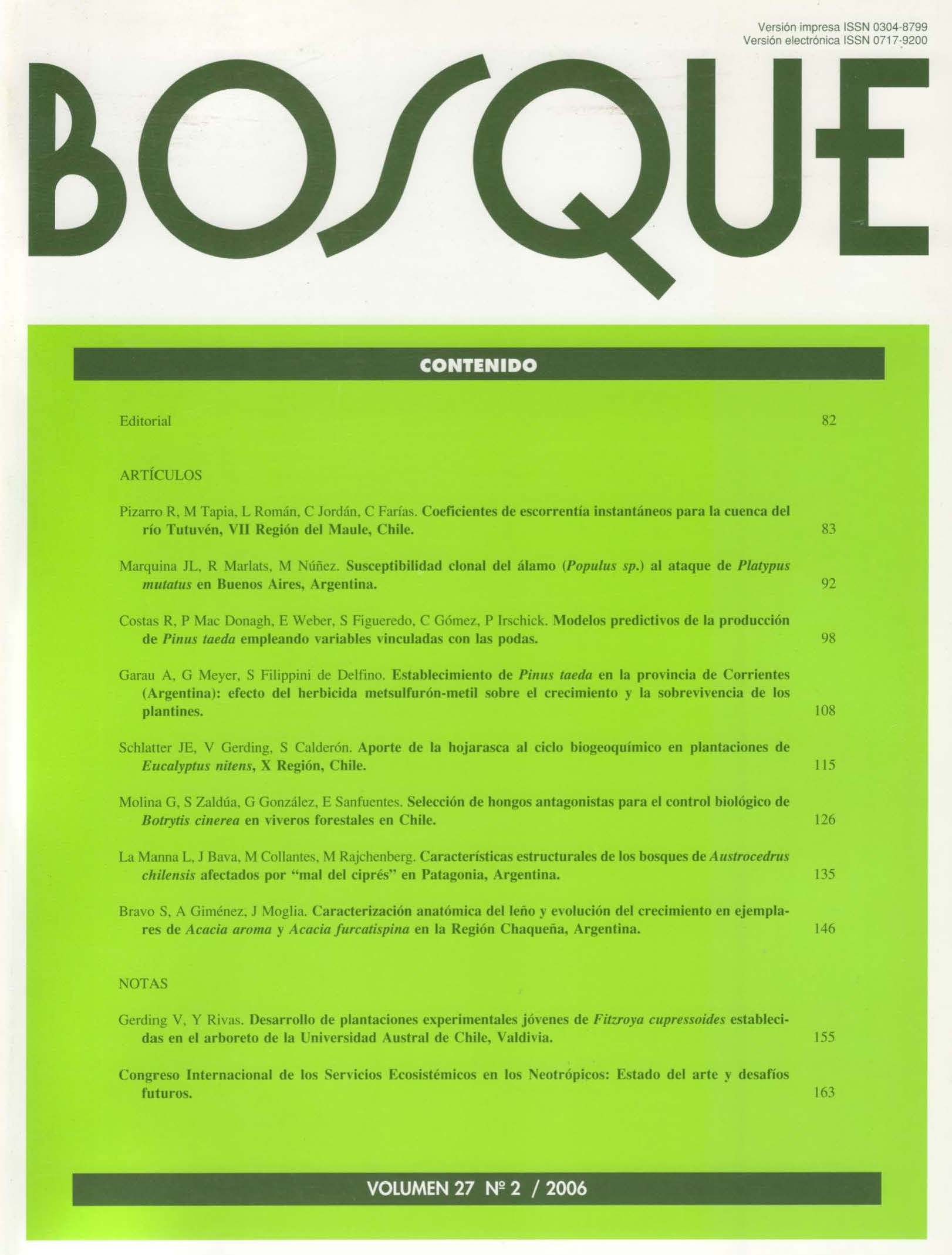Development of young experimental plantations of Fitzroya cupressoides established at the arboretum of Universidad Austral de Chile, Valdivia
Main Article Content
Abstract
Two experimental plantations of Fitzroya cupressoides (alerce), established at the arboretum of Universidad Austral de Chile (Valdivia, 39°48’S and 73°14’W; 50 m asl) in 1994, were evaluated in May 2004 in order to assess its development ex situ through an integrated diagnosis. The plants had been produced from seeds in a three-year-nursery period (Cordillera de la Costa de Valdivia, coastal mountain range, Valdivia). In 1998 approximately 50% of the trees were transplanted to an adjacent area with 70% regeneration coverage of Acacia melanoxylon, being frequently cut for clearance (stand A). The remainder on the grassland corresponded to stand B. The distance between trees was 4 x 4 m. The climate is warm and rainy with Mediterranean influence; the soil has a loamy silty texture with no structure or drainage boundaries, rich in organic matter, strongly acid and with low phosphorous availability. Alerce shows adequate climatic and edaphic adaptation, and good nutritional and sanitary state. Stand B reached a height greater (P<0.05) than stand A (289 vs. 260 cm), but none of them was different in crown diameter (181 vs. 167 cm), DHB (4.1 vs. 3.8 cm) and survival (76%).

